
19th Guru Kelucharan Mohapatra Award Festival
Text & pics: Lalitha Venkat
e-mail: lalvenkat@yahoo.com
September 13, 2013
Srjan presented the 19th Guru Kelucharan Mohapatra Award Festival from
Sept 5 – 9, 2013 at Rabindra Mandap in Bhubaneswar. This year’s festival
was dedicated to the memory of Pt Raghunath Panigrahi, who passed away
on August 25. Seeing Panditji as a guest of honor in last year’s
festival is still fresh in our memories.
View Slide show
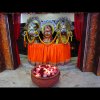
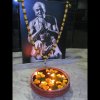
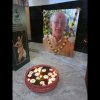
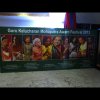
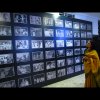
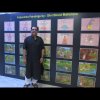
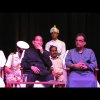
At the inauguration on September 5, one noticed that even though there
were myriad lights decorating Rabindra Mandap’s lawns and drive, it all
seemed subdued in a way. Guru Ratikant Mohapatra spoke a few words about
the greatness of Pt Raghunath Panigrahi, who had received the Guru
Kelucharan Mohapatra Award in 2006. He dedicated the 2013 edition of the
festival to his memory and also announced this year’s awardees. Sushil
Kumar Das (Director, Culture) spoke about the rise of Kelubabu from
humble beginnings to a maestro renowned the world over and may the
brightness of his legacy never dim. Odisha Governor Dr. SC Jamir said,
“The passing away of Pt Raghunath Panigrahi is a great loss to the music
world. It’s our responsibility to preserve the legacy of great
artistes. Hundreds of Guru Kelucharan Mohapatra’s students are dancing
today, and he will continue to live through his many disciples and
admirers.”
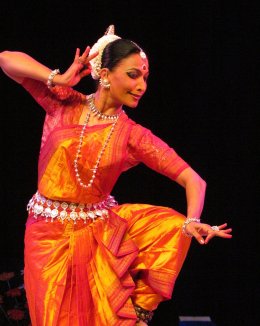
Bijayini
Satpathy
| 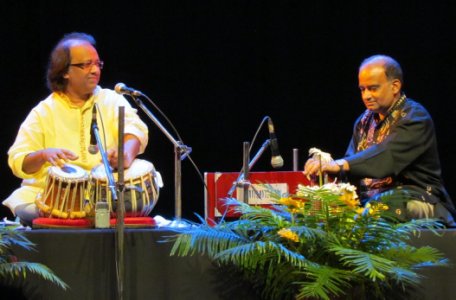
Pt Nayan Ghosh & Hiranmay Mitra
|
The dance program kicked off with a mesmerizing Odissi recital by
Bijayini Satpathy featuring music compositions by Pt Raghunath
Panigrahi. After paying her obeisance, Bijayini said with deep feeling,
“It’s the 12th day since Panditji left us. We at Nrityagram have had the
privilege to work with him for 15 years which culminated in 6
productions to Panditji’s unparalleled music set to Surupa Sen’s
choreography. He always had an intuitive idea as to where each note
should go and created his divine compositions with such spontaneity. I
dedicate my performance to Panditji.” The melodious music, the perfect
postures and movements, fleeting changes of expression touched with the
sensuousness of Odissi had the audience enthralled. It was a wonderful
beginning to the festival and it seemed as if the program got over too
soon.
How did Bijayini feel about opening the 19th edition of the GKMA fest?
“It was my long-time wish to learn from Guruji - more than learning, to
watch him at work with Odissi. When I approached him in 1997, he
declined and I respect that. Now, to be a part of a celebration
dedicated to Guruji is totally humbling.”
Used to earning rave reviews in USA, how does it feel to perform in Odisha?
“The special thing about performing in Odisha is that my family and friends are there in the audience.”
The second half of the evening featured a soothing and serene tabla
recital by Pt Nayan Ghosh who was accompanied by Hiranmay Mitra on
harmonium. Pt Ghosh recalled that Kelubabu had been a great friend and
admirer of his father Pt Nikhil Ghosh. After seeing elaborate stage
design for the festival in preceding years, one was struck by the
simplicity this year of only 4 big floral arrangements, perhaps in
deference to the recent demise of Pt Panigrahi.
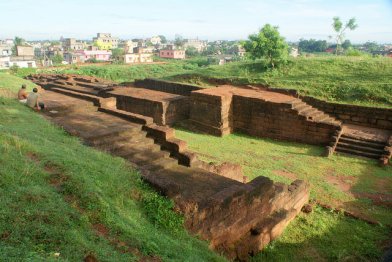
Sisupalgarh then
| 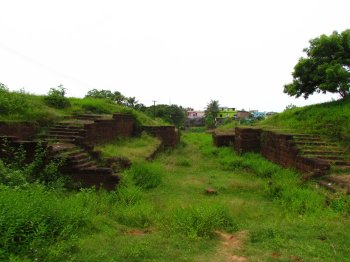
Sisupalgarh now
|
No visit to Bhubaneswar is complete without some visits to temples or
heritage sites. The next morning saw us stopping frequently to enquire
about the way to Sisupalgarh (only about 5km away but no one knows where
it is!) to see the remains of the nearly 2500 year old fort. When we
did finally locate it, we noticed the difference between the pics we had
seen on the net and what we were looking at in reality. The writing on
the ASI board had half peeled off and the whole area was so overgrown
with weeds that we could not venture in anywhere for fear of snakes!
Only some steps and a bit of wall were visible, in varied state of
erosion. The other side was drowned in weeds with a herd of buffaloes
happily enjoying the greens at their disposal. The site dates to Mauryan
times and is supposed to be one of the earliest fortifications in India
and to see this heritage site in such a neglected condition was
pathetic. It’s time the relevant authorities did something to save this
place before it becomes more ruined and encroached upon totally by
modern buildings. It is not enough for the ASI to place a board (even
that was in an embarrassingly horrible state) and forget their
responsibility. They need to monitor such sites time and again and
evaluate them. If this site is developed, it can be of great interest to
not just students of archeology but also to students and researchers in
history, architecture, arts and culture. Hopefully the ASI will make a
note of this and help in restoring the place to normalcy.
The evening of Sept 6 commenced with a Kathak recital by Deepak Maharaj,
the son of Pt Birju Maharaj, who called it his shraddanjali to Kelubabu
through his dance. Clad in a green costume, he even sang ending with a
dance on the peacock and his signature rhythm piece that earned him
appreciation. As is the general trend, one inevitably heard people
drawing comparisons between him and his illustrious father, but Deepak
Maharaj was able to hold his own. The music component of the evening
featured Hindustani vocal by Pt Ulhas Kashalkar with Pt Suresh Talwalkar
on tabla, Gaurav Chatterjee on harmonium, supported by Panditji’s
disciple Gati Krishna Naik and Bhubaneswar based sitarist Sabyasachi
Rout. Yet another evening of wonderful, relaxing
melody.
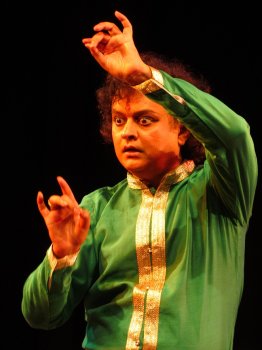
Deepak
Maharaj
| 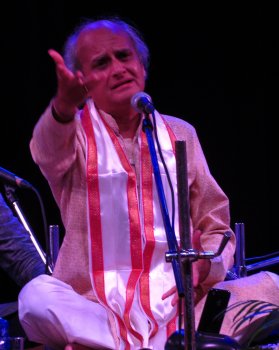
Pt Ulhas Kashalkar
|
View Slide show

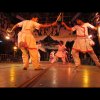
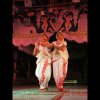
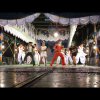
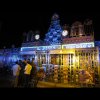
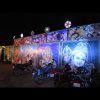
We were not yet done for the night. Our hosts had arranged for us to
experience Jathra (opera) by Eastern Opera Blue run by Eastern Media
Ltd. Entrance into the tent was through a structure with steel bars, the
outside walls decorated with pictures of popular deities and above it, a
horizontal line of posters of their popular plays. We entered single
file and sat in the first row of the huge pitched tent replete with a T
shaped stage decorated with trimmings above the stage and surrounded by a
railing at eye level. We were amazed to see hundreds of people seated
in several rows. The program started at 11.30pm and groups of young men
and women alternately performed traditional juxtaposed with modern to
get the audience into the mood. One saw snapshots of Oriya dance and
culture like worshipping Jagannath, dummy horse dance, a touch of
Odissi, gotipua and folk too alternating with Bollywood type dance to
loud film songs performed by girls in skimpy costumes and guys in shiny
pants. A man in suit and hat and a bubbly girl filled in as presenters
introducing the segments and entertaining with glib poetry and peppy
talk. The energetic dancing to flashing disco lights as well as singing
of popular Hindi songs went down well with the mostly male audience.
Unfortunately we could stay only for part of the show. We were told that
a media magnate/politician owns 4 groups named after colors (blue, red,
green and yellow). The group practices its new show with political or
social themes in June and July after which they have nearly 300 shows a
year. They pitch a tent in an open area and perform every night before
moving on. The group has 150 members with the top artiste earning 1 to
1.5 lakhs per month! This evening, the 1500 strong audience had each
paid Rs.100 for a ticket. It was also amazing to know that some nights
they have two shows and they have an audience of 1500 to 2500 people
even at odd hours like 2am eagerly waiting to buy tickets for the second
show! One wished such things happen to classical arts as well. Our host
said jathra is a thriving business in Odisha! It seems that the jathra
artistes are certainly doing better than their classical counterparts
economically. “Though it is a reflection of how cinema culture has taken
over, it’s commendable that they are able to plan this on such a large
scale. It is definitely a struggle for classical arts to survive with
the larger audience preferring jathra type entertainment,” says senior
critic and scholar Leela Venkataraman who lived in various parts of
Orissa for many years.
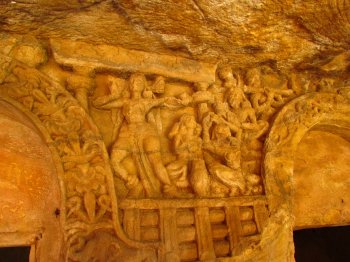
|
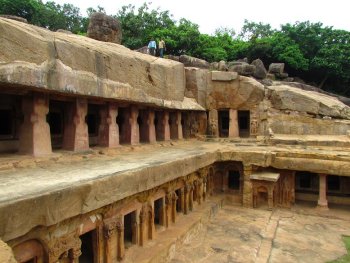
|
| Udayagiri
|
|
The sightseeing for the next morning took us on a revisit to Udayagiri
caves in Bhubaneswar dating back to 1st century BC. The weather was hot
and humid and even Deepak Maharaj had commented on it the previous
evening at his recital. The site has been well maintained (It would be
nice if some attention is paid to Sisupalgarh too!). The sculpture on
the second level of a group of caves depicts a dancer over one cell and
the Ramayana story over another cell. This time, one paid attention to
the inscription on the roof inside the Hathi Gumpa and its English
translation is given outside for reference. Dr. Kothari and Leela
Venkataraman pointed out that indologist Ananda Coomaraswamy has mentioned the history and
significance of these caves in his essays. A young boy clad in saffron
robes was going around distributing ‘holy water’ to people who in return
felt obliged to pay him a few rupees. The boy even ‘blessed’ people 4
times his age!
The evening was devoted to only one performance, a fusion music concert
by flautist Pt Ronu Majumdar accompanied by Atul Raninga on keyboard,
Ramdas Palsule on tabla and Mukul Dongrey on percussion. Since all sound
checks had been done and was set to satisfaction, the nearly two and
half hour program went off smoothly. The group played almost a dozen
numbers including a Russian inspired Calcutta Chiaroscuro, Dancing with
the Wind, Joy Sutra inspired by Mozart and RD Burman, a rhythmic piece
Back to the Roots, Playground dedicated to children, Sundar Bansuri, the
original composition of Vande Mataram in raag Bihag and ending with a
jazz composition. While some felt that a classical concert by Ronu
Majumdar would have been better suited to the festival, the Bhubaneswar
audience seemed to enjoy the evening fare, clapping in tune with the
percussion segments and whistling their appreciation sometimes. A
gentleman in the first row complained that the mike was hiding
Majumdar’s face to which the flautist responded lightly that since
someone actually wanted to see his face too, perhaps he was not so bad
looking after all! This gentleman stood up and made periodic comments
loudly to the musicians through the evening’s recital.
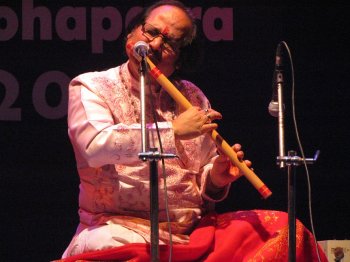
Pt Ronu Majumdar
| 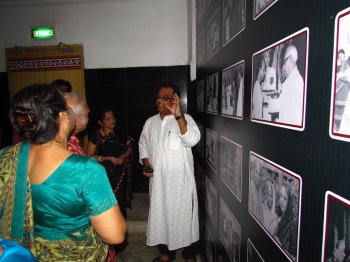
Ratikant Mohapatra elaborating on the
photographs
|
Poet Jayadeva was born in village Kenduvilwa. River Prachi, called Ganga
of Orissa in the Puranas flows to the north and the sacred Kusabhadra
of mythological importance flows in the south. The extensive shady
groves of Kendu and Vilwa trees once stretching along the village gave
its name Kenduvilwa. It was a beautiful drive to Kenduvilwa to
Jayadeva Pitha, a heritage project with a museum and garden dedicated to
Jayadeva, about 30km from Bhubaneswar. The brain behind this stupendous
project is enterprising retired forest officer Gadhadhar Mahapatra, an
authority on the Geeta Govinda. As a youngster, he was forbidden to read
the Geeta Govinda because of the sensual content, so that kindled his
curiosity and led him to research on his own. He said people had given
only sensual interpretation but not its spiritual aspect. Radha’s
emotion for Krishna is prem bhakti. Geeta Govinda is sensual, spiritual
and aesthetic. In his magnum opus, Jayadeva had written about the
tangible and intangible elements of nature. The Geeta Govinda mentions
40 types of trees, creepers, flowers and plants and the desire to
recreate the mythical Brindavan took root when he was in college. From
the land belonging to culture department of Odisha, he got 16 acres to
develop his Jayadeva vatika in the Jayadeva Pitha complex. After
acquiring funds, he started developing the gardens from 2000 and what we
see today is 13 years of his dedicated efforts in creating these sylvan
surroundings.
Since “colors have certain effects, aroma of flowers influences human
emotions,” as you enter the complex, you walk down an avenue of Ashoka
trees. Its significance is that one should discard sorrows (shoka) when
one enters the gardens. Mahapatra had managed to locate the Ashoka tree
with great difficulty. He has divided the garden according to the
cantos and the flora described in the particular canto has been planted
in that grove. Wrapped around a bower, we saw the pink lavanga flower
(it is shaped like a clove and is not a clove plant as some think)
blooming along the delicate creeper and that’s the flower in “Lalita
lavanga lata....” We saw Kendu and vilwa trees, navamalika jasmine,
kinshuka tree, nageswara tree, patoli tree, tamala tree that creates
darkness of ignorance and much more. The flower bushes progress from
red, saffron, yellow to white signifying the grade of emotions. We were
engulfed in soft aromas as Mahapatra guided us around the gardens,
singing verses and explaining the meaning in an enchanting manner,
accompanied by wonderful abhinaya and gestures that would put a dancer
to shame!
View Slide show
Jayadeva Pitha
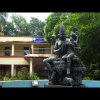
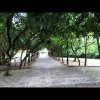




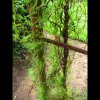

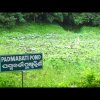


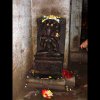
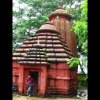
“Jayadeva has given a name for each of the twelve cantos. These names
give a summary of the mood of Krishna that is elaborated in a particular
canto. As per the descriptions, the famous artist Sudarshan Sahoo
sketched the images of Krishna according to the canto name and from
those sketches we got life-size bronze sculptures made. These will be
installed across the themed-garden as to suit the whole narrative,” said
Gadhadhar Mahapatra as he took us to a little room where all the
statues were locked up due to security issues. Canto 1 is named Samoda
Damodarah (gleeful Damodara), canto 2 is Aklesha Keshavah (Keshava, the
blessed one), canto 3 is Mugdha Madhusudanah (Madhusudana, the
enraptured one), canto 4 is Susnigdha Madhavah (Madhava, the winsome
one), canto 5 is Sakanksha Pundarikakshah (Pundarikaksha, the yearning
one), canto 6 is Sotkantha Vaikuntah (Vaikunta, the solicitous
one), canto 7 is Nagara Narayanah (Narayana, the ardent lover), canto 8
is Vilaksha Lakshmipathih (Lakshmipathi, the bashful), canto 9 is Mugdha
Mukundah (Mukunda, the enamoured one), canto 10 is Chatura Chaturbhujah
(the clever Chaturbhuja), canto 11 is Sananda Govindah (Govinda, the
exhilarated one) and canto 12 is Supreeta Pitambarah (Pitambara, the
gratified).” We have to cross a quaint bridge to get to the small shrine
where Jayadeva prayed to Goddess Padmavathi (We were told she was a
Jain goddess with lotus in one hand, fruit in the other and adorned with
a seven-hooded snake like many other Jain god statues). Since it was
dark inside, we saw the idol by torch light.
From the age of 8 to 20, Jayadeva studied and mastered Sanskrit, Vedas
and Upanishads at a place called Kurmapataka and then went to Puri. His
wife Padmavathi was trained in dance and music at Srikakulam in Andhra.
Jayadeva mixed Carnatic and Odra Magadhi style and developed Odissi
style of music. There are 10 villages around Kenduli where the varied
avatars of Vishnu are worshipped and are said to be the inspiration for
Jayadeva’s Dasavatara stuti. Two hymns composed by Jayadeva have been
incorporated in the Guru Granth Sahib, the holy book of the Sikh
religion. Krishna has many names, so why is this poem called Geeta
Govinda, why not Geeta Madhava? The name ‘Govinda’ is used because it’s
about the sensual aspect of Krishna.
There is a small Jayadeva Museum in the complex with some beautiful
patachitra paintings and some pottery and sculpture exhibits of what was
excavated in that place. A Mana Chitra (artist’s imagination) of
Jayadeva sat on an elevation in the central hall. There are gazebos
where one can sit and take in the ambiance and watching the rains seated
in the gazebo while Mahapatra regaled us with some stanzas and meaning
was a beautiful experience. The culture department, tourism department
and forest department are concerned with this heritage project that
takes about Rs.2 lakhs per month to maintain. Till now, only seminars
have taken place here, but a dance festival is being planned for the
future. It is a pity that even the locals are not aware of this
wonderful place that reflects the beauty and richness of the Geeta
Govinda from a nature aspect. Dancers are performing ashtapadis all the
time and they should visit Jayadeva Pitha and experience something
beyond just performing. Forums should definitely invite Gadhadhar
Mahapatra to share his vast knowledge of the Geeta Govinda and the
audience would definitely be the richer for it, as we were.
The beautiful morning continued as we visited Prof Ramhari Das Odissi
Gurukul Trust at Sakshigopal. Set amidst cool greenery of one and half
acres, classes in mardala, Odissi and Odissi music is conducted during
weekends. Pt Dhaneshwar Swain is the Chairman of the Trust that has
about 150 students. There is a nice little library too and inspired by
one of the books, we all purchased the book on the Geeta Govinda
published by Odisha State Museum on our way back. Each book (a heavy
hardbound copy) is rich with information and illustrations and
commentary by Dhananjaya. The present book was edited from the original
palm leaf manuscripts that are housed in the museum. And all of this
came for around Rs.400. What a steal! Every dancer, musician, research
scholar and Jayadeva enthusiast must own a copy of this precious
treasure. Chittaranjan Mallia (Secretary, Odisha Sangeet Natak Akademi)
kindly arranged for our copies at such short notice. By popular demand
Prof Ramhari Das and mardala Guru Dhaneswar Swain presented the
ashtapadi “Dheera sameere” as composed by Pt Balkrishna Das and a couple
of lilting folk numbers. We were grateful to our host and Chittaranjan
Mallia for arranging this special morning.
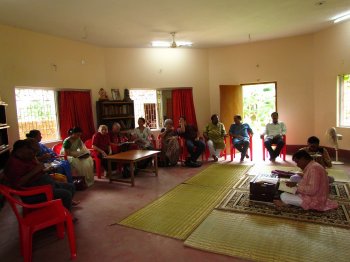
Visiting
group
|
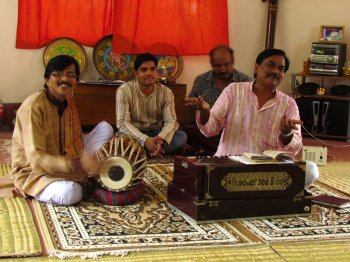
Pt Dhaneswar Swain & Prof Ramhari Das
|
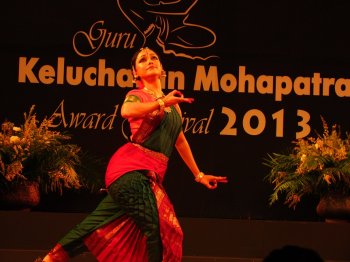
Rama
Vaidyanathan
| 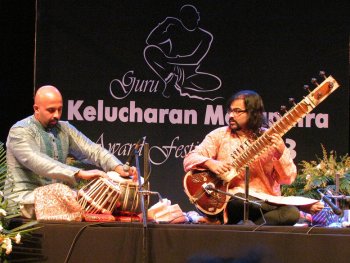
Anubrata Chatterjee & Purbayan Chatterjee
|
The first performance of the evening saw Rama Vaidyanathan perform her
patent Mayur Allaripu, the dance of the peacock that has recently wowed
the audience in NYC. Her main piece was the famous Ashtaragamalika
keertanam “Pannagendra Shayana,” a composition of Swati Tirunal which is
an example of sringara bhakti where the mature nayika expresses her
deep devotion as well as passion for Lord Padmanabha. After a Purandara
Dasa kriti showcasing a completely different nayika - the young immature
teenager infatuated with Krishna, Rama concluded with an item on Shiva.
About performing at the festival, Rama says, “I am extremely honoured
specially since the festival is in memory of the legendary Guru
Kelucharan Mohapatra. Both Ratikant and Sujata are my dear friends and
it’s always a joy to be invited by your peers. Bhubaneswar has always
had a very discerning audience. I have performed here before and have
noticed the quality of the audience that comes for classical music and
dance.” Pt Purbayan Chatterjee presented a sitar recital with tabla
accompaniment by Anubrata Chatterjee. “Odisha has a rich culture that we
Bengalis can identify with,” said Purbayan Chatterjee. The music was
serene and the audience just soaked in the ragas.
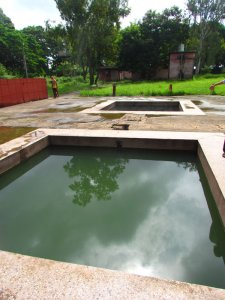
|
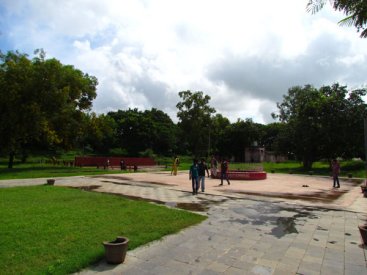
|
| Hot sulphur springs at Atri
|
|
The next morning, we had an early start to visit the hot sulphur springs
at Atri, about 50 km from Bhubaneswar, a 75 minute drive along lush
green scenery. The entrance fee is only Rs.5. Set in a vast complex with
well maintained lawns, we walk across to a well covered in rising steam
where 2 men call the well Lord Shiva’s nose, scoop the water in tiny
jugs suspended by a rope and tell us to hold out our hands. The water is
indeed hot. Further down are 4 tanks with light steam hovering above.
We all sat on the edge of one of the tanks with our feet dangling in the
water. The hot temperature gradually settled to lukewarm as the skin
got accustomed. There is a beautiful tree lined path around the complex
accessed through some steps. One member of our group who has arthritis
was all smiles that she could actually climb the steps without
discomfort and another who had a pain in the heel, discovered that it
had gone! The curative value of these hot springs was much appreciated.
There are two sides to the story of this place. Devout Hindus believe
that this was the nose of Shiva whose temple is some distance away. The
Muslims believe that a sufi saint Bukhari wanted to wash himself before
his prayers, so he struck the ground with his stick from where the hot
spring opened up miraculously. This place is a great representative of a
secular tradition as well as a place of healing.
No visit to Bhubaneswar is complete without a visit to the Mohapatra
household to pay respects to Guruma Laxmipriya Mohapatra. We also went
to Pt Raghunath Panigrahi’s house to convey our condolences to his son
Baboo Panigrahi. On our warily eyeing the 7 dogs lying around in front
of the house, Baboo explained that his father had been fond of taking
care of strays. The drawing room was filled with Panditji’s trophies and
awards, and photos of him with his wife Sanjukta. Baboo gifted us all a
book ‘Musical notes of Geeta Govinda’ written by his father.
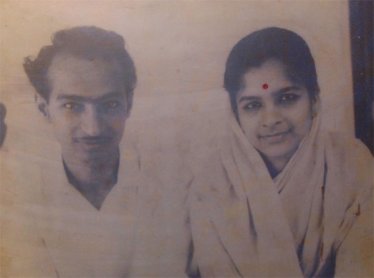
|

|
| Pt Raghunath Panigrahi & Sanjukta Panigrahi
|
|
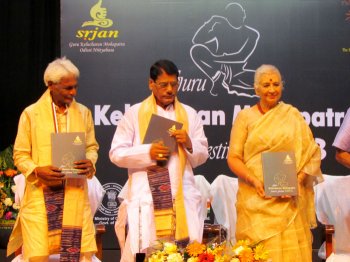
Guru Shankar Behera, Pt. Ghanashyam Panda, Leela
Venkataraman
| 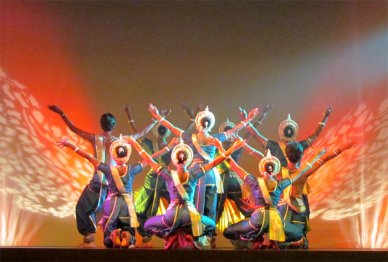
Srjan Repertory
|
The first half of the evening of Sept 9 was devoted to the Guru
Kelucharan Mohapatra Award presentation. Renowned Odissi singer and
composer Pt. Ghanashyam Panda and Mumbai based Odissi dance Guru Shankar
Behera received the coveted Guru Kelucharan Mohapatra award for the
year 2013 for their dedicated service to Odishi art and cultural
heritage of Odisha. The award carries a cash prize of Rs. 50,000 each.
Since the Chief Minister was unable to attend the function, Leela
Venkataraman and Dr. Sunil Kothari were called in as chief guests.
Having been a resident of Odisha for a few years, Leela Venkataraman is
very fluent in the language and she wowed the audience with her Odiya
speech. She mentioned that all those years back, PV Krishnamurthy
(Subbudu’s brother) had mentioned that 2 young boys, one a flautist and
one an Odissi dancer had the makings of becoming great artistes. They
were Hariprasad Chaurasia and Kelucharan Mohapatra. (It is also special
that the house Kelubabu renovated and made his home in Bhubaneswar
earlier belonged to Hariprasad Chaurasia!)
The grand finale to a full house as usual featured a new work
‘Gitamritham’ by artistes of Srjan, choreographed by Ratikant Mohapatra
with music by Pt. Bhubaneswar Mishra, Pt Raghunath Panigrahi and
Satyabrata Kath. The script, research support and Sanskrit rendering
were by Nityananda Mishra. The well trained dancers performed with
perfect sync, the costumes were beautiful and the choreography was
brilliant in many sections. Rajashri Praharaj and Bijaylaxmi Satapathy
portrayed Krishna and Arjuna respectively. Lights by Jayadev Das were as
usual colorful and interesting, but the music was a tad loud.
To what does Ratikant attribute the success of his festival?
“Srjan functions as a team. Everything is a team effort. Debiprasad
Mishra (Tikki) came to Srjan as a young boy and developed into an
invaluable asset as a top administrator who takes care of the complete
organization. Jayadev Das brings in his expertise in theatre as well as
tech support. My uncle Aditya Mohapatra helps in scholarly input. Pt
Nityananda Mishra is the Sanskrit expert. The hard working dancers don’t
just practice for a couple of months for a program but attend Srjan
training every day of the year, which is why they are able to attain
perfection in their movements.”
What are the future plans?
“Next year is the 20th edition of the Guru Kelucharan Award Festival and
the 10th anniversary of Kelubabu’s demise in April. We are working on
presenting a 7 day festival, featuring one artiste per evening.”
Everyone missed seeing the smiling face of the dynamic Ashok Kumar
Tripathy (ex-Chief Secretary, Govt of Odisha), who has been transferred.
He had done a lot to promote Odisha art and culture. Tripathy had been
responsible for installing lots of new lights and sound system in
Rabindra Mandap and there had been plans to renovate the stage by
removing the foot high projection bordering the stage front that hides
the footwork of dancers but that plan now unfortunately has come to a
standstill. Impeccable arrangements, slick presentations, quiet
efficiency and aesthetic sense (the invitation cards were beautiful) are
a hallmark of Srjan festivals and this year was no exception. Anytime
we saw them, Tikki, Ratikant or Sujatha were always the smiling hosts.
The ever smiling Srinibas Ghatuari’s lucid compering in Odiya was a
charming act in itself. It is indeed a pleasure to attend this
festival.
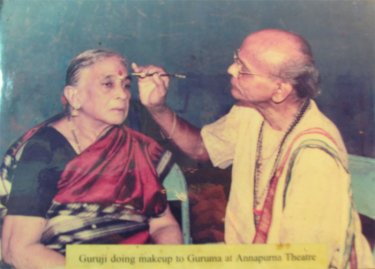
Kelubabu putting makeup for his wife
| 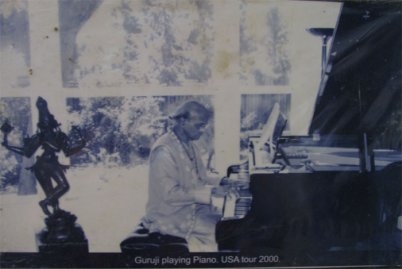
Kelubabu playing piano during US tour (2000)
|
Some of us got a chance to view the film ‘The legend speaks…’
co-produced by Srjan on invitation of Ratikant Mohapatra before leaving
Bhubaneswar. Without eulogizing or asking umpteen people to give
testimonials, the documentary traces Kelubabu’s youth when he inculcated
his interest in dance after learning mardala and tabla. Ileana
Citaristi says in a scene, “Everyone claims to be the first to do this
or that, but not guruji.” Kelubabu used to help in doing makeup for the
dancers and Kumkum Mohanty says that she got so spoilt by him, to this
day she cannot do her own makeup. A charming scene shows Kelubabu doing
makeup for his wife and they together perform an abhinaya piece.
Kelubabu is shown doing pooja with his family with his granddaughter
Preetisha seated on his lap, enjoying a visit to Raghurajpur and meeting
up with old friends, playing solitaire on his desktop computer,
teaching Ratikant and so on. We see him perform in the Konark temple as
well as the banks of a river. We hope that next year this well made
documentary is screened at the festival, so everyone can enjoy it.
Ratikant credits his father and Sanjukta Panigrahi for spearheading the
popularity of modern Odissi on a global scale. He said Kelubabu himself
never believed in different schools of Odissi like Deba Prasad bani,
Pankaj Charan Das bani or Kelucharan bani, for him Odissi was one dance
form.
Lalitha Venkat is the content editor of www.narthaki.com
|

